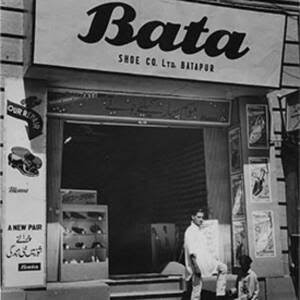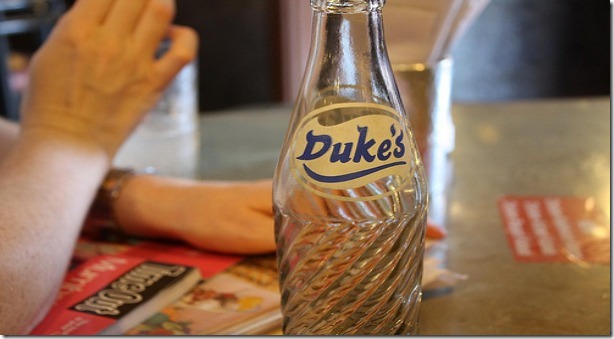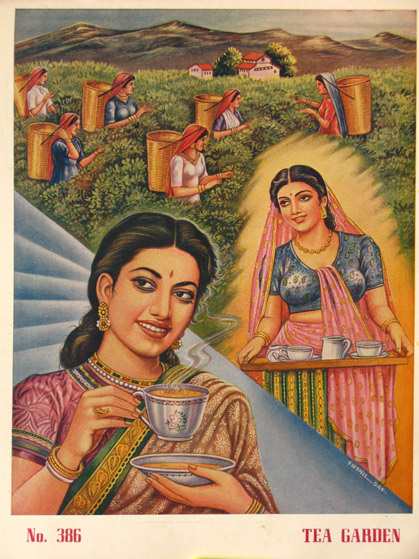A small township near Toronto, Canada, a small town near Lahore, Pakistan, and a township near modern-day Kolkata are connected through a fine thread stitched together by some Bohemian shoemakers, let us explain. 1/20 

Now what would a town near Toronto and a place near Kolkata have in common? To get to the answer we have to travel back in time to the late 19th century to the Bohemian region of Moravia in the modern day Czech Republic. 2/20
In the small town of Zlin on September 21, 1894, The T. & A. Baťa Shoe Company was established by Baťa siblings Tomáš, Anna, and Antonín Baťa. The siblings were among eight generations of the Bata family shoemakers and master cobblers. 3/20




A family of innovators, the Bata enterprise were the first to introduce mechanized shoe production techniques, including the first steam-driven shoemaking machines. By 1905 Bata was the largest shoe maker in Europe producing 2200 pairs of shoes per day. 4/20
Bata shoes were not only considered of excellent quality but appealed to the styles of the era and were affordable. The Batovka was in particular quite popular. As World War erupted sales of Bata shoes went through the roof as huge military orders came in. 5/20
But Bata’s journey was just beginning back then. In the late 1920s, Tomáš arrived in erstwhile Calcutta. His purpose was to source rubber and leather for his footwear factories back home. At that time, hardly anybody in India knew Tomas, or Bata for that matter. 6/20 

Tomáš was left shocked by the scenes on Indian streets where hardly anybody wore shoes. Recognizing the market opportunity, he immediately set out to provide an affordable and durable product for people of every class. 7/20
Initially established near Konnagar, north of Calcutta, the company later moved to the south of the city, creating what would eventually become Batanagar—the first shoe manufacturing unit in India and the precursor to many similar township projects by the Company. 8/20 

Tomáš had already experimented with the idea, back home Zlín was now recognized as a Bataville, they had established schools, community centers, cinema halls, department stores, among other facilities and Batanagar was no different. 9/20 

However, the Indian market was then dominated by Japanese products. Bata gradually carved its space in the market. By 1940, Bata factories were producing an impressive 3500 pairs per week. 10/20
“Beware of Tetanus, even a small injury could be dangerous — so wear a shoe,” a tagline for Bata rubber shoes read from 1938. 11/20 

Tomáš tragically died in a plane crash in 1932 at the age of 56. Control of the company was handed over to his half-brother Jan Antonin Bata and his son. Jan established new factories, including one near Patna called Bataganj and another near Lahore called Batapur. 12/20 

Bata continued to expand its presence in Europe and North America until Hitler’s expansionist ideas took a stranglehold of Europe. Sensing the impending danger Jan sent out most of his Jewish employees (almost 300 families) to the factories in the US or Canada. 13/20
Jan himself would spend the rest of his life in exile in the US and then Brazil. After the war Jan was tried as a traitor by the Czechoslovak authorities for colluding with the axis powers; his name was only cleared in 2007 after almost 60 years. 14/20
In India, however, Bata’s shoes were everywhere. By 1955, Bata in India was manufacturing an impressive 4,800,000 pairs of leather footwear and 14,040,000 pairs of rubber footwear. This accounted for 40% of all Indian production of rubber shoes. 15/20






On April 6, 1956, the company underwent a new registration as Bata Shoe Company Private Limited. By 1962, the global organization had expanded its production and sales activities to 79 countries, and had 66 factories and 4,100 company shops. 16/20
In the 70s and 80s, Bata ruled the television screen. Its catchy tagline, "First to Bata, Then to School," not only resonated widely but also played a pivotal role in establishing the brand's synonymous association with school shoes. 17/20 

Despite tough competition, Bata has cemented its position through the durability and affordability of its products. The brand is so ingrained in our daily lives that many are surprised to know it is not an Indian company. 18/20
One of Bata's most endearing features, perhaps even more noteworthy than its shoes, was its steadfast commitment to outreach and employee-centric policies and welfare. Its township projects worldwide, some of which have fallen to hard times, are still a testament to that. 19/20
Do you still wear Bata shoes? Tell us about your favorite Bata moment. 20/20
Sources: Jan Antonin Bata’s name cleared after sixty years, ;
)%20enterprise.english.radio.cz/jan-antonin-ba…
thebatacompany.com/about-us/histo…
)%20enterprise.english.radio.cz/jan-antonin-ba…
thebatacompany.com/about-us/histo…
Image attributes: @Britannica; @WikiCommons; The first advertisement of bata shoehttps://steemit.com/histrionic/@sajibbose/the-first-advertisement-of-bata-shoe
• • •
Missing some Tweet in this thread? You can try to
force a refresh

















